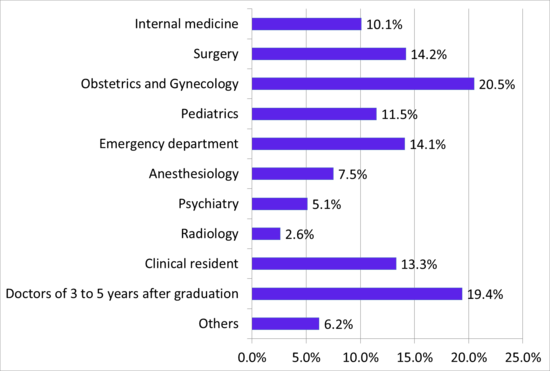Column Finance and the Social Security System 2019.05.08
【Aging, safety net and fiscal crisis in Japan】No.183: Supply and demand forecast of doctors by department
As mentioned in Column No.108, correcting hospital doctors' long working hours has become one of the most important issues in health reform. Therefore, the Ministry of Health, Labour and Welfare had set up a meeting on how to reform the way doctors work to deliberate on the related issues. The report was published in March 2019, and the government set an upper limit on the working hours of doctors in hospitals, taking into consideration the circumstances in the medical field.
Figure 1 shows the percentage of doctors currently exceeding the newly set upper limit on working hours by department. The Ministry of Health, Labour and Welfare estimates the number of doctors required in each department, assuming that hospital doctors' working hours does not exceed the upper limit (Table 1). As for the number of doctors in 2016, the number of internal medicine doctors required is 122,253. This means the department, which has a strength of 112,978, is falling short by 9,275 doctors. This shortfall in internal medicine doctors is estimated to increase to 16,226 in 2030. On the other hand, the actual number of psychiatrists is 15,691 with an excess of 254 in 2016. The excess of psychiatrists is estimated to increase to 1,093 in 2030.
Figure 1 Percentage of doctors currently exceeding the newly set upper limit on working hours
Source: Ministry of Health, Labour and Welfare
Table 1 Estimation of excess and shortfall in the number of doctors
Source: Ministry of Health, Labour and Welfare


